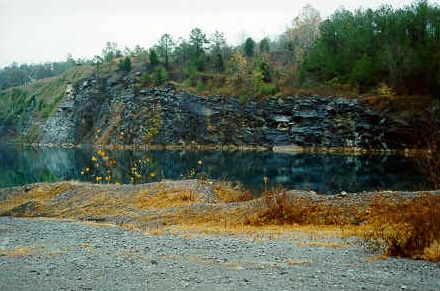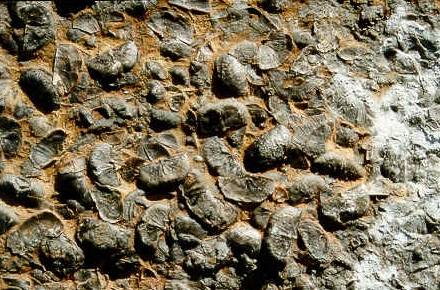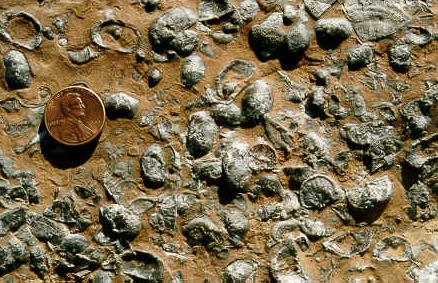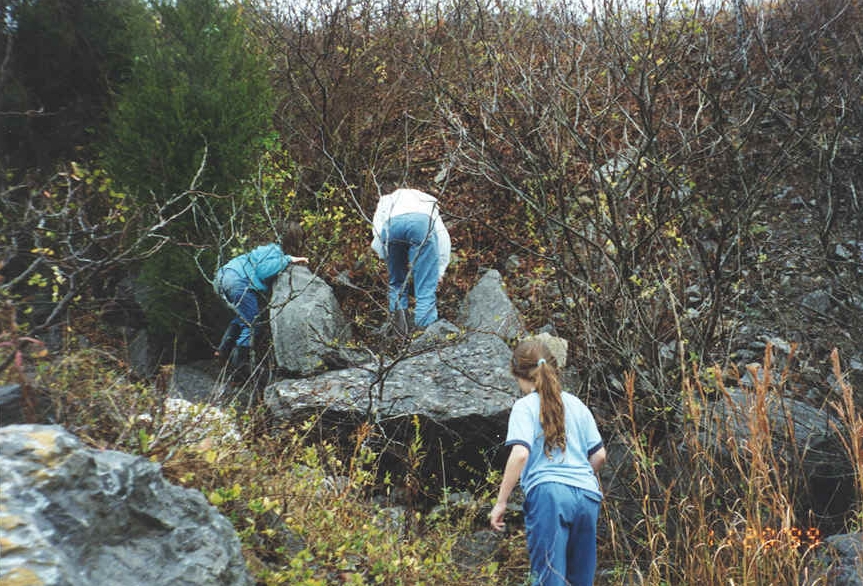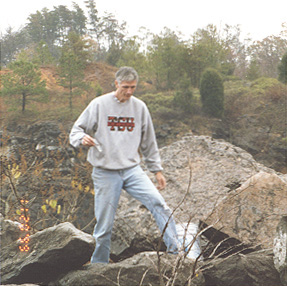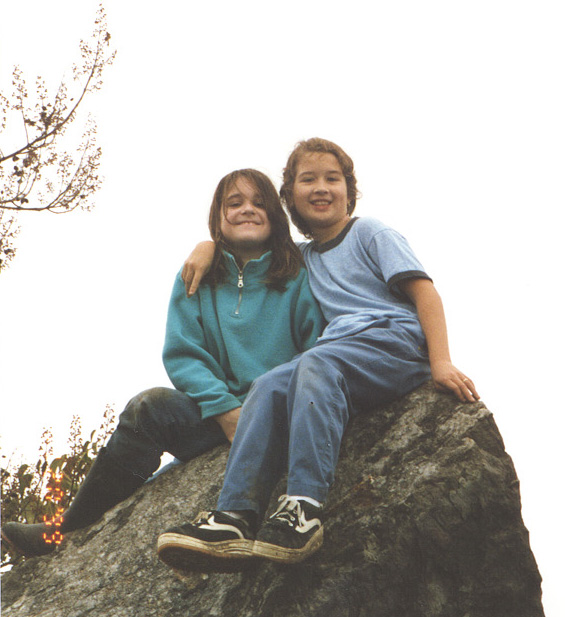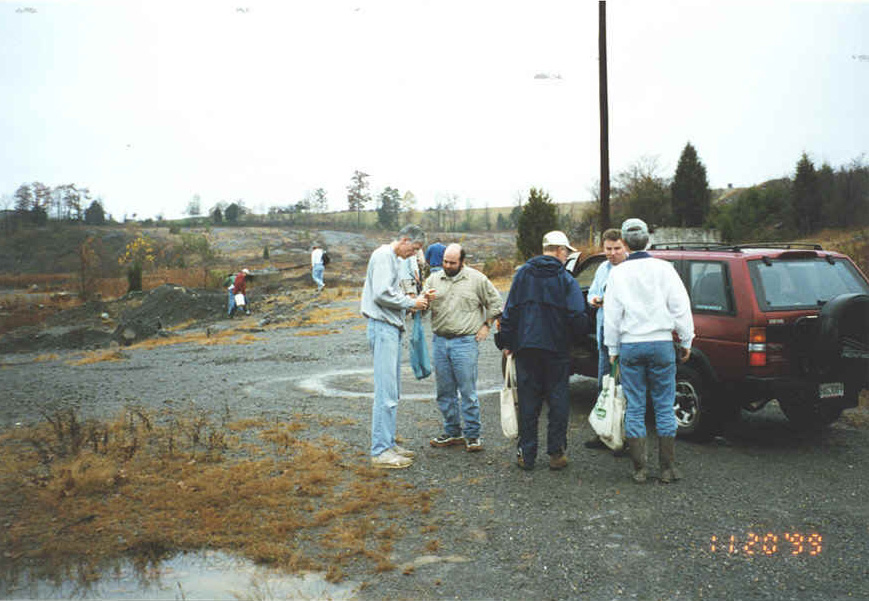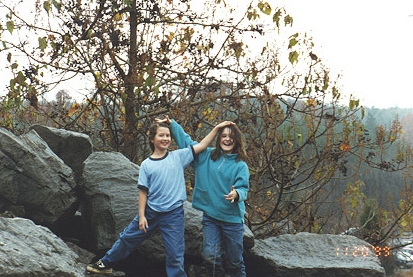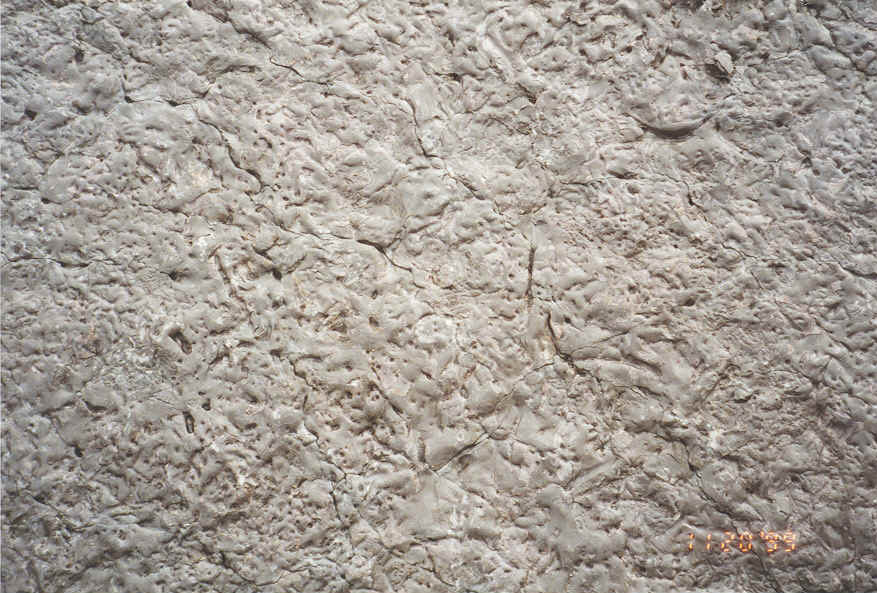November 20, 1999 - Bibb Co, AL
|
This Saturday field trip was the first visit even by veteran BPS members to a quarry located in north Bibb County. The rocks from this quarry have been used as rip-rap at several highway locations, the best ones I know of being on a ramp at Exit 79 and between Exits 77 and 79 on I20/59 near Tuscaloosa. |
The trip was attended by 20-25 BPS members and guests on the first rainy day we had in nearly three weeks. This quarry is a largely abandoned location where rocks of middle Ordovician age (460-480 million years) have been exposed. The rock formations at this site are part of the well known Chickamauga Limestone Group. The main quarry pit is now a small lake filled with deep-looking water having a strong aquamarine color. The lake is surrounded by steep cut cliffs. Rocks are scattered in large piles around a wide area near the lake, and it was among these piles that BPS members searched for fossils of mostly marine animals. In spite of the vastness of the area, it took some tenacity to find fossils since fossiliferous rocks were not that common. |
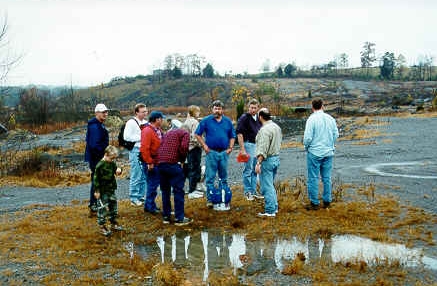 |
| Fig. 2 - Group discussing strategy for exploring the area. |
|---|
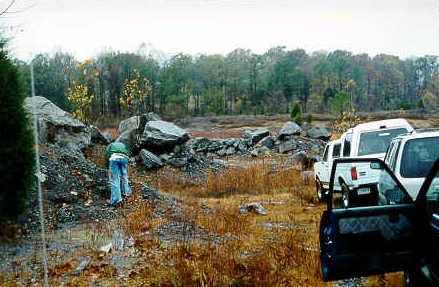 |
| Fig. 3 - View towards rock piles around the lake. |
Apparently, it is the fossils themselves that tell us the age of the rocks at this site. According to Prof. Carl Stock of the University of Alabama Department of Geology, the main index fossils are conodonts, which are very small, sometimes cone-like objects whose nature is not well understood. I am not sure that any of us noticed such fossils, but a magnifier would probably be needed to see them in any case. More obvious index fossils found in quarry rocks are brachiopods. According to R. Wixon (University of Alabama master's thesis, 1984), Ordovician brachiopods are good index fossils because of their abundance worldwide and the short period of their evolutionary timescale. Well-preserved brachiopods of clear middle Ordovician age are found at the quarry and at the I20/59 sites.
Many of the brachiopods that we found at the quarry appear to belong to the order Strophomenida which, according to The Fossil Book by Rich, Rich, Fenton, and Fenton (1996), are frequently referred to as "petrified butterflies". There are many genera and species in this order of articulate brachiopods, and I could only identify a few in the rocks that I personally picked up, based on illustrations in Wixon's thesis and Volume H of the Treatise on Invertebrate Paleontology (Moore, editor, 1965). A few are shown in the illustrations here. Larry Hensley found a large slab covered with brachiopod shells mostly about 1 cm in diameter each (see photo). Several of us managed to hammer away at this large rock and get some pieces of it. Many of the brachiopods on this slab appear to be of the genus Sowerbyella. |
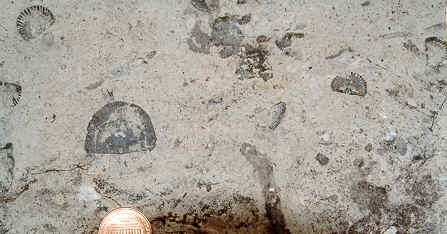 |
| Fig. 6 - Medium-sized brachiopod, probably of genus Rafinesquina, with smaller Hesperorthis australis brachiopods to upper right and left |
|---|
|
Larger brachiopods about 2.5 cm or so in diameter seemed less abundant than the 1cm or smaller pieces. The one I show here, shaped sort of like a tombstone, is probably of the genus Strophomenus or, more likely, Rafinesquina. The largest brachiopod I found is more than 3cm in diameter, and may be of the genus Tetraphalerella, whose members can get this large according to Wixon. Other fossils found include the stems of crinoids, random stem plates of dis-assembled crinoids, bryozoans, parts of trilobites and, I heard, cystoids. Trace fossils of worm burrows were actually among the easiest fossils to find at this site. A large slab covered with criss-crossing tracks is shown here. Don McDonald also showed me what he thought was the end of a horn coral, and Vicki Lais showed several of us a very large rock having some interesting spiral-shaped fossils that we could not identify. Apparently, someone had previously used a rock saw to cut out a piece of this same rock. |
|
|
Although it was not easy finding fossils at this site, it was clear that everyone who attended the field trip had an enjoyable time. The area was interesting and the rocks mysterious, being older than most of those exposed in regions north and south of the site. The key to success at a site like this is to have a lot of time to explore and to be prepared. I regret that I had not studied any of the books I mention above until AFTER I got home! --Edited by Vicki Lais |

